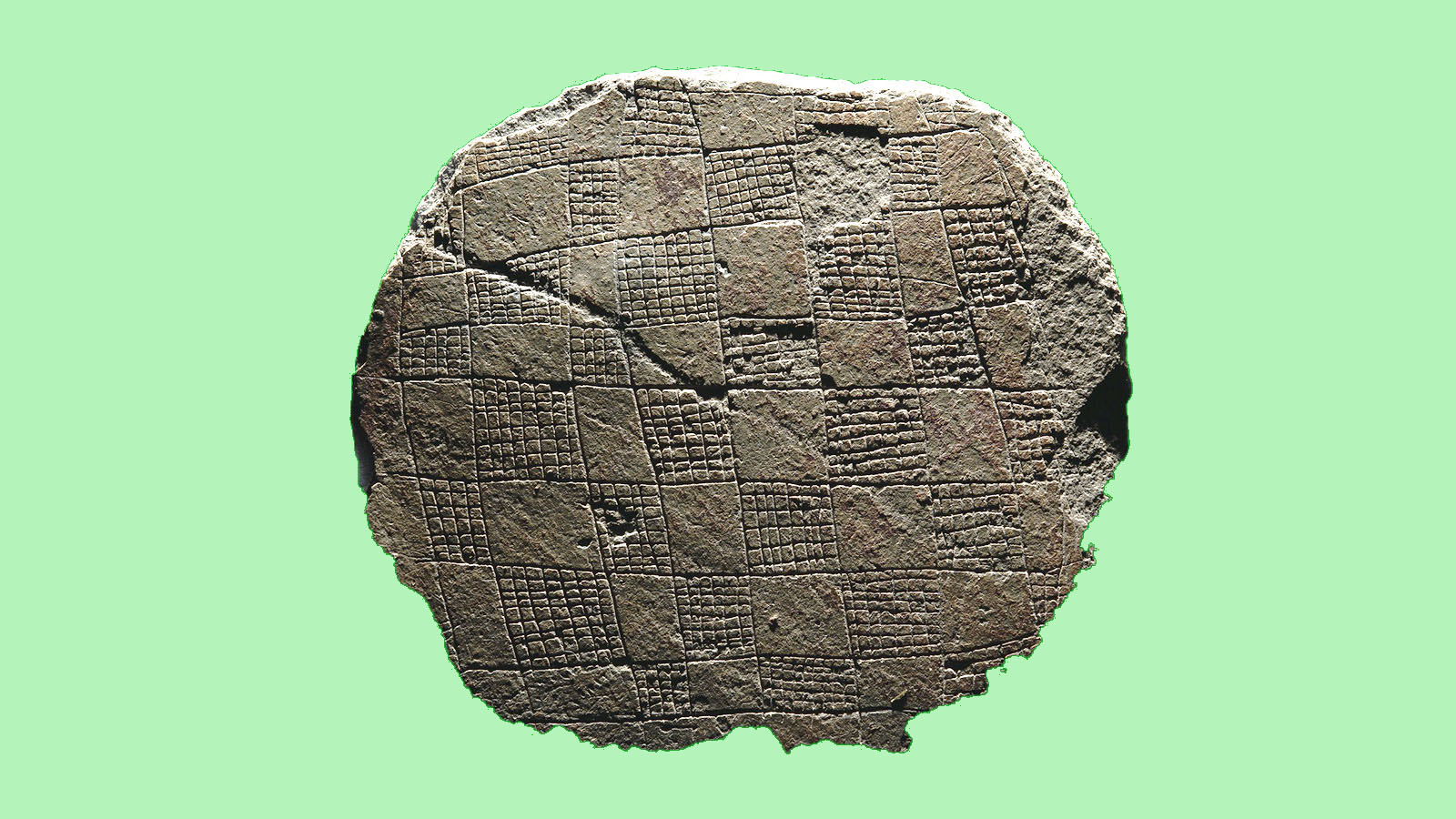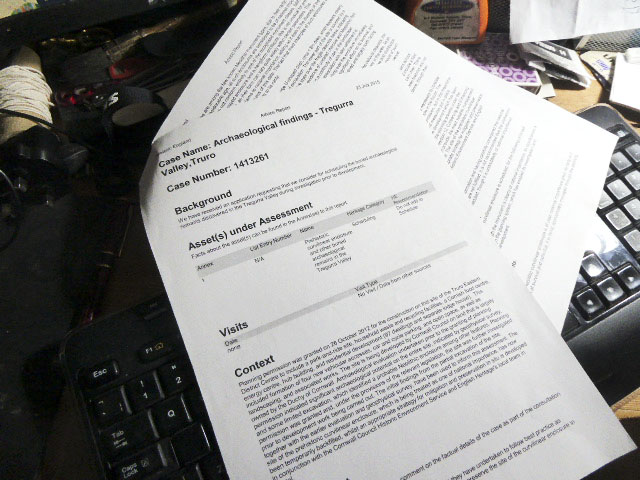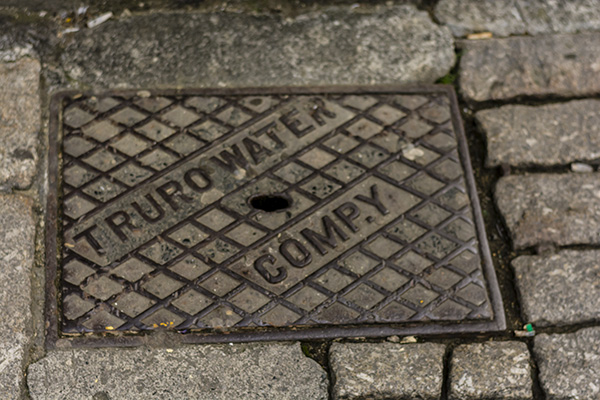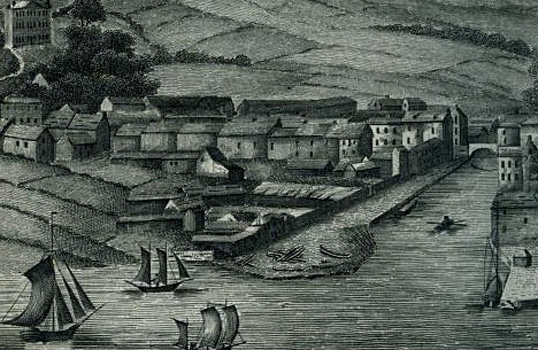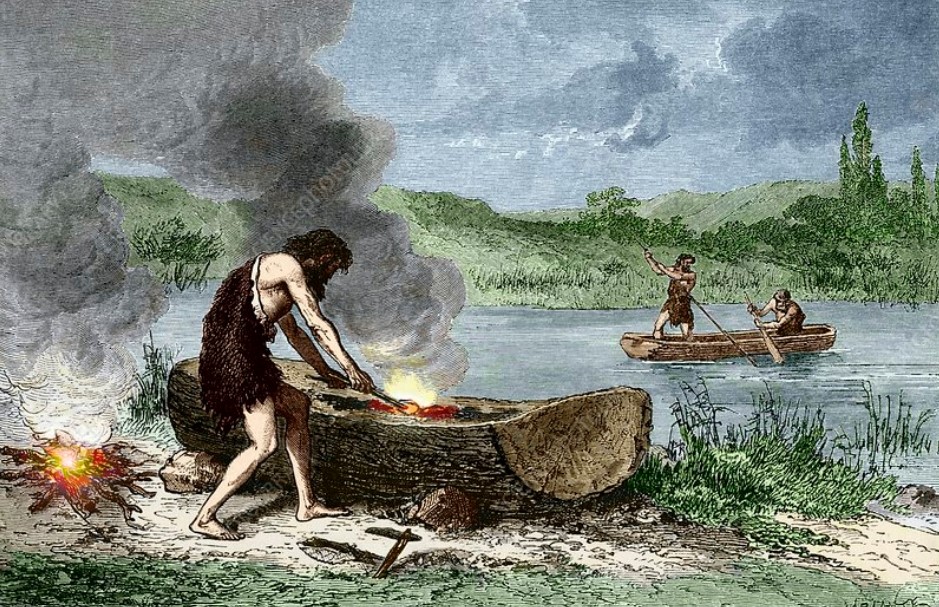Don’t let’s forget
When you consider the archaeology of Tregurra, with its neolithic causewayed enclosure (now ‘preserved’ beneath the Recycling Centre) and soils, the flint knapping pit (with its strong inference of coastal sea trade between Dorset and what was to become Truro, and in this case, the port of Tresillian), smelting pits and early medieval field systems, and you see that sites which tell such stories of early civilization and industry, such as the Blue Stone quarries which provided stones for Stonehenge, are protected, worked on and published, you have to ask why we have not taken more strident and confident steps to protect Truro’s vitally important archaeological legacy.
Everybody is trying to find a new future for towns. I feel strongly that towns will remain what they have always been – hubs for trade, commerce, retailing, hospitality, culture, religion, law and administration (as well as resonant places to live in and identify with). Rumours of the death of high streets are somewhat premature (and not too good for image or confidence!). There is no doubt that a town with such a rich story as Truro’s ought to be marshalling the bits and pieces of things, locations, remnants, documents and yarns to give to successor generations, and to share with entrepreneurs, visitors, inhabitants, institutions and communicators – why not? Our roots lie at least in the later neolithic age, and our town has evolved to become what it is. Our archaeology tells our story.
Uniquely, we now have the technology and the attitude, to conserve, interpret and convey, or to trash, as we develop. Truro Castle was abandoned just after it was built in the C12th. However, it was still being scavenged for stone, and its layout was still evident in the late C18th – 600 years later. These days we trash things in minutes – look at the A30! So, the onus is on us to understand and protect, where the justification is sufficient. In the case of Tregurra’s causewayed enclosure, neolithic soils and flint-knapping pit, that justification exists, and it has been, temporarily set aside on trust.
Of course, we can see the very early board game etched in to native slate, which was the prize find of the pre-Waitrose excavation. It is wonderful, and is held by the Royal Cornwall Museum in River Street, but the context of activity, culture and settlement in what was to become the Manor of Moresk, all fade into the background of slim typescript reports and (usually both accurate and beautiful) archaeologist’s drawings and data, languishing in general obscurity as time ticks on (or would do if the Town Clock was working!).
When one looks around Tregurra, at Polwhele Castle, at the Bronze Age settlement uncovered (but hastily obliterated) at Nancesmere before the Persimmon/Wain bulldozers moved in, we see a settlement which is likely to have been one of an encircling group around what would eventually become Truro, protected by castles (Polwhele, Carlyon etc), with evidence of trade, industry, religious practice, transport and settlement.
We were more than lucky at Tregurra that the landowner is the Duchy of Cornwall and that the main contractor was CORMAC. Archaeologists were afforded good time and good working conditions, and the interest shown by the contractor and landowner in the archaeological work was commendable.
Regarding the causewayed enclosure (one of a complex network to be found throughout Britain), an application to schedule it was turned down by Historic England because the operator of the civic amenity site is a local authority, and HE has sufficient confidence in that sector to feel that it need not schedule, and thereby formally protect, this important structure, soils and cultural evidence. Where else is there even a question about the value of such things?
In operating its recycling centre Cornwall Council has a contractor. What checks are carried out, by whom, at what sort of intervals, on the exercise of responsibility which is expected by HE as a balancing factor for not scheduling this site? Where are the reports and assessments? Who sees them?
The Council too operates in a world short of money, needing to do more and more, and will excuse itself of doing things if the law (or regulation) does not require it. So, the faith which underpins HE’s unwillingness to schedule the Tregurra Causewayed Enclosure may be misplaced, Let’s hope not!
We should not let go of the fact that the HE Report that concluded that scheduling was not to occur had to be counter-signed by an independent expert person. In this case, that person signed, but only on the recorded proviso that, should the leasehold arrangements change, the recycling centre cease to operate, the ownership change, or other material circumstances change, then the matter of scheduling must be revisited.
Deborah Williams commented in 2013:
Although the neolithic curvilinear enclosure is of clear national importance given its rarity and particularly good level of survival and potential, it is being appropriately managed, through the planning process. The parallel controls enforced by scheduling would add unnecessary complexity to the management of the site without bringing a correspondingly greater measure of protection than that offered by the current agreements for preserving the site in situ. Given this, it is recommended that the site not be scheduled at this point in time. Should the management or circumstances change, it may be appropriate to reconsider this. (HE Case No: 1413261 Tregurraq Valley, Truro 2015)
According to experts I have asked, it is very unusual for a counter-signatory to require that comments are included within the Case Report like this.
As I understand arrangements, Cornwall Council has a 15-year lease with an option to renew. It may not be long before the Stewardship of the Duchy of Cornwall changes. Could these be two ‘points in time’?
Recently, Truro Civic Society mounted a short series of talks. One really important thing to emerge from these is that there is invaluable work, spurred by all the recent archaeological discoveries related to property development (and recently, on the A30 works between Chiverton and Carland) on otherwise un-built farmland, to map the evolution of settlement, culture and economy from the earliest times of human settlement. This is the story of our town and how, throughout history, it has connected, worked, lived and expressed itself.
A recent contretemps over the fate of Tolgarrick farmhouse has shown us that we must be constantly vigilant, and that we are in a battle to ensure that Truro’s (and Cornwall’s) past is not decimated by development which, in some cases, risks breaking the vital contextual link between our community and its landscape.
I hope that parents and teachers will read this article, and will pass on to the children they influence, shape and teach that the caveat in the Tregurra Scheduling Report is there, and, when the time comes, must be acted upon. We should never forget that, for many people living in and around Truro, the strands of their ancestry, belonging and character reach back in continuous strands to a time when the sound of flint-knapping clinked in Tregurra Valley until stone tools slowly disappeared to be replaced by bronze and iron. It is a continuity and history which defines, but which is also to be shared and celebrated. Let us not forget to protect it.
Bert Biscoe
5th May 2022


